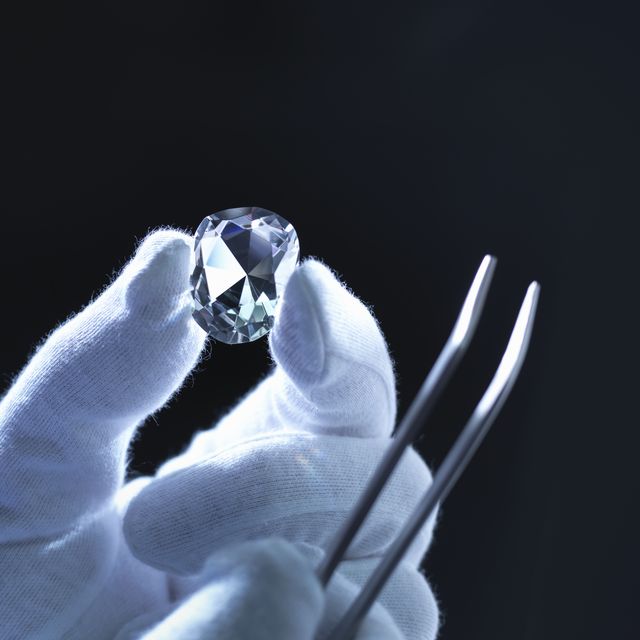The recent breakthrough in diamond synthesis promises to revolutionize the industry by enabling the growth of lab diamonds under standard atmospheric pressure, dramatically reducing the costs and complexity associated with current high-pressure methodologies. This innovative liquid metal technique, which incorporates a molten mixture of elements like gallium, iron, nickel, and silicon, facilitates the nucleation of carbon atoms at relatively lower temperatures and pressures, obviating the need for a seed diamond. The implications of this discovery, published in the journal Nature, are profound, hinting at a future where lab-grown diamonds—both in film and potentially gemstone form—could become more accessible and versatile across various technological and commercial applications. Have you ever wondered about the future possibilities for creating lab-grown diamonds? As the demand for synthetic diamonds continues to grow, scientists have recently unveiled a revolutionary method that has the potential to change everything we know about diamond creation. This new technique allows for the production of lab-grown diamonds under normal atmospheric pressure, a significant departure from the conditions traditionally required.

Overview of Traditional Diamond Creation Methods
Understanding the new method for growing diamonds requires us first to explore the traditional techniques. Historically, creating lab-grown diamonds has been an intensive endeavor, requiring conditions that mimic the high pressures and temperatures found deep within the Earth.
High-Pressure, High-Temperature (HPHT) Method
The HPHT method involves creating an environment similar to the Earth’s mantle, where natural diamonds form. This entails achieving pressures in the range of 5-6 GPa and temperatures above 1,300 degrees Celsius. A carbon source is then introduced into this environment, where it crystallizes into a diamond around a seed crystal.
Chemical Vapor Deposition (CVD) Method
Another prevalent method is the CVD technique, which involves breaking down molecules of gas (usually a hydrocarbon gas like methane) into carbon atoms, which then deposit onto a substrate. This process occurs under relatively lower pressures compared to HPHT but still requires a vacuum environment and high temperatures of around 800-1,200 degrees Celsius.
Challenges with Traditional Methods
Both HPHT and CVD methods come with their own set of challenges, primarily revolving around high energy consumption, expensive equipment, and prolonged growth periods. Additionally, these methods often necessitate a seed diamond to commence the crystallization process, adding to the complexity and cost.
The Revolutionary Low-Pressure Diamond Growth Method
In stark contrast to traditional methods, the new low-pressure diamond growth technique involves growing diamonds at room temperature and normal atmospheric pressure. This method represents a major advancement in the field of synthetic diamond production.
The Experiment
The key to this breakthrough lies in a liquid metal medium. In a controlled laboratory setting, a team of scientists from South Korea successfully stirred a mixture of carbon atoms into a hot bath of molten metal compounds – specifically, a combination of gallium, iron, nickel, and silicon.
Components and Process
Here is an outline of the crucial elements of the process:
| Component | Role |
|---|---|
| Gallium | Stabilizes the molten metal mixture at lower temperatures (melts at 85°F) |
| Iron | Provides structural stability and helps in carbonization |
| Nickel | Aids in catalyst formation and carbon adhesion |
| Silicon | Facilitates the nucleation process for diamond crystallization |
The mixture is heated to about 1,800 degrees Fahrenheit—significantly lower than the temperatures used in traditional methods. Methane gas is then introduced as the carbon source, catalyzing the formation of carbon clusters. Thanks to the presence of silicon, these clusters are held in place, allowing them to nucleate and form diamond structures.
Nucleation and Growth
Nucleation is a critical step in the formation of diamonds. In this process, carbon atoms adhere to one another, forming a stable core that gradually grows into a diamond lattice. The innovative aspect of this new method is that it does not require the extreme conditions traditionally associated with diamond nucleation and growth.
Comparisons and Benefits
This novel approach to diamond synthesis introduces several benefits over traditional methods, potentially revolutionizing the industry if it proves to be commercially viable.
Energy Efficiency and Cost Reduction
One of the most notable advantages is the significant reduction in energy consumption. Unlike HPHT and CVD methods, which require specialized, energy-intensive equipment to create high-pressure and high-temperature conditions, the new technique operates under normal atmospheric pressure and relatively moderate temperatures.
Scalability and Practical Applications
The simplicity of the setup may allow for easier scaling of diamond production. Industrial-scale manufacturing facilities could see a considerable reduction in operational costs, making synthetic diamonds more accessible for various applications, from jewelry to high-tech industries.
Versatility in End Products
Currently, the method appears particularly suitable for growing diamond films, which are critical in scientific applications. Moreover, the possibility of using this technique to create seed crystals can streamline and enhance other diamond production methods, further broadening its impact.
The Role of Carbon in Diamond Formation
Carbon is a fascinating element, found in a variety of forms ranging from graphite to graphene and diamonds. Its versatility stems from its ability to bond in different ways, creating substantial diversity in its properties.
Carbon Structures
Carbon atoms can link together in numerous ways to form distinct structures:
- Graphite: A soft, slippery substance used in pencils.
- Graphene: A single layer of carbon atoms with exceptional electrical properties.
- Fullerenes: Molecules composed entirely of carbon, taking forms such as the famous “buckyball.”
Among these, diamond stands out as a naturally occurring form of carbon that is both extremely hard and visually stunning.
Transition from Various Forms to Diamond
Transforming carbon into diamond involves reconfiguring its atomic structure from a relatively soft, planar arrangement (as in graphite) to a three-dimensional lattice where each carbon atom bonds tetrahedrally with four other carbon atoms. This process traditionally necessitates high-pressure, high-temperature conditions to overcome the unprecedented stability of the diamond lattice.

Scientific Implications of the New Method
The advancement of growing diamonds under normal pressure could extend far beyond jewelry, impacting several scientific and industrial fields.
Potential for Electronic Devices
Diamonds are exceptional semiconductors. The new growth method could lead to more affordable and efficient production of diamond-based semiconductors, significantly impacting electronics industries, particularly in applications requiring high thermal conductivity and electrical insulation.
Optical Applications
The optical properties of diamonds, such as their transparency across a broad spectrum and high refractive index, make them ideal for various optical components. Lower-cost diamond production can enhance the development of advanced lenses, windows, and other transparent materials.
Environmental Impact
The traditional diamond mining industry is often criticized for its environmental and ethical issues. Lab-grown diamonds present a more sustainable alternative. This new method could further reduce the environmental footprint by minimizing energy use and eliminating the need for high-pressure equipment.
Future Prospects and Challenges
While the initial findings are promising, there are several factors that will determine the future success and adoption of this new method.
Economic Viability
For the jewelry industry, aesthetic quality and cost are paramount. The commercial competitiveness of this method will depend on whether it can produce gem-quality diamonds at a lower cost than traditional methods.
Adaptation for Larger Crystals
Currently, the technique shows promise in creating diamond films. However, producing larger, single-crystal diamonds suitable for cutting into gemstones or industrial use will require further refinement and experimentation.
Regulatory Approvals
As with any new technology, regulatory hurdles need to be addressed. Certifications regarding quality, ethical sourcing, and environmental impact will play essential roles in market acceptance.

Conclusion
In summary, the advent of this new method for growing lab diamonds at normal pressure is an exciting development in the field of synthetic diamond production. It leverages a liquid metal medium to facilitate diamond growth under moderate conditions, potentially mitigating the challenges posed by traditional methods. With further research and technological advancement, this technique might open up new possibilities not only for the jewelry industry but also for various scientific and industrial applications.
As the journey continues, the potential for cost reduction, scalability, and diverse applications make this a compelling area of study. Whether you’re involved in the diamond industry, scientific research, or simply have an interest in groundbreaking technologies, the future looks promising for this innovative approach to diamond synthesis.
